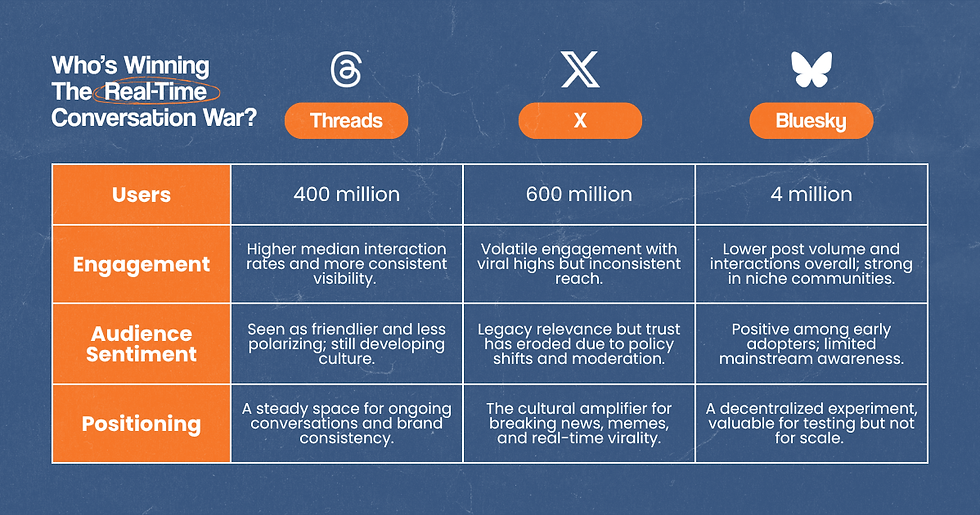The Power of Positivity: Four Tips on How to Write Positive Facebook Ad Content
- Eric Elkins

- Nov 8, 2017
- 4 min read
Updated: Nov 10, 2022

If you’re a small business owner, or maybe just a sleep-deprived social media manager, you’re likely skilled at procrastinating and somewhat weary of Facebook advertisements. Let’s face it, finding the exact right ad copy (image, audience, placement) is no easy task, especially when you’re trying to compete on a crowded feed.
Not to mention, Facebook can be picky when it comes to ad approvals. What could you possibly be doing wrong? Well, turns out, a lot. Facebook is very particular about positive language in ads. In a world cluttered with negative sentiment, preying on the fears of consumers, this is a welcome breath of fresh air.
Our clients, whether a dating app, a furniture chain, or a natural lotions brand, could easily focus on the negative aspects of what they aim to fix.
“Lonely? We can help.”
“Is your house feeling tired and uninspiring? We can help.”
“Are your hands dry and cracked? We can help.”
But the best results (and fewer ad rejections) come from maintaining an upbeat tone and a can-do attitude.
And here’s how to do it.
1. Clear, concise language and CTAs.
One of my college professors once told me that memorable ads are written to be read at a fifth-grade reading level. Consider the following advertisements with lasting taglines consisting of two or three words: Nike’s “Just Do It,” Apple’s “Think Different,” Maybelline’s “Maybe It’s Maybelline.” These accessible slogans can inspire… just about anyone.
Accessible content means broadening your audience, which ultimately means more clicks and more sales. Keep language simple and straightforward. Calls-to-actions should be specific, but use positive verbs and phrases such as “Learn more,” “Act now,” and “Hurry in.”
2. Highlight benefits instead of negative consequences.
In advertising your product or service, don’t rely on a cliché or the negative consequences that could befall your customer should they pass on your Etsy shop. Instead, focus on how the product will benefit the user and improve their daily routine. Don’t use fear in creating buying incentives. The world isn’t going to end should they not click on your homemade, cat-themed koozies.
For example, I don’t purchase a premium dog food brand for my pups because it will prevent their inevitable demise. I purchase specific dog food because the television ad featured a chihuahua with strong joints and better teeth, all thanks to the premium pup chow. In a few words, no one wants to think of their dead dog.
3. Spark warm and fuzzy feelings
Consider selecting paint. Each color makes you feel differently. Ideally, you’ll paint with a color that makes you feel inspired, calm, or even relief after a long day at work.
A larger purchase, such as a sofa, home, or car is a long-term, high-investment purchase. It has to “feel right.” Consider your word choice in creating that emotion. Subaru’s “The wilderness is second nature to our wagon,” or “You’re going to need a bigger map,” inspires adventure and prompts drivers to envision their future on the road, in a Subaru. It doesn’t emotionally-manipulate; it builds the user’s narrative.
When I say you should infuse warm and fuzzy feelings into your ad copy, I mean that you attach positive emotions to the benefits of your product, so that the audience can envision how the product will make them feel long-term.
4. Don’t misrepresent your product.
Your copy needs to properly represent the product you’re advertising. It’s important not to misrepresent products in Facebook ad copy (or any copy, for that matter!). Match your copy to your product’s function. Consumers normally don’t purchase a coffee mug because it’s described as “the cup of your dreams.” Really place yourself in the shoes of your audience and use words that truly initiate a purchase — how does your product or service make things better?
As an aside, getting someone to click from Facebook to your website is just the beginning. If a user clicks on your ad and arrives on a page that’s not enticing, doesn’t match the look and feel of the ad, and isn’t mobile-friendly, they’re not likely to make it to check-out.
We have plenty of experience A/B testing ad copy, images, and targeting on social platforms. And though Facebook’s pickiness when it comes to positive messaging can be a pain, performance across the board improves with aspirational content.
If you still have doubts in writing your ad copy, follow this advice from David Ogilvy, “If it is something important, get a colleague to improve it.” In other words, everyone needs a good editor. Happy writing!
Agree? Disagree? Good news, we’re hiring, so contact our office today to share your thoughts with me! I’m always open to a healthy discussion about Facebook advertising.
KT Heins is a Community Manager at Widefoc.us who specializes in technical writing. When she isn’t at the office, she is most likely hanging out with her Chiweenies, “working” on a novel, or freelance copywriting. Follow her on Instagram @ktotheheins for mountain views, cold brews, and fancy food.










